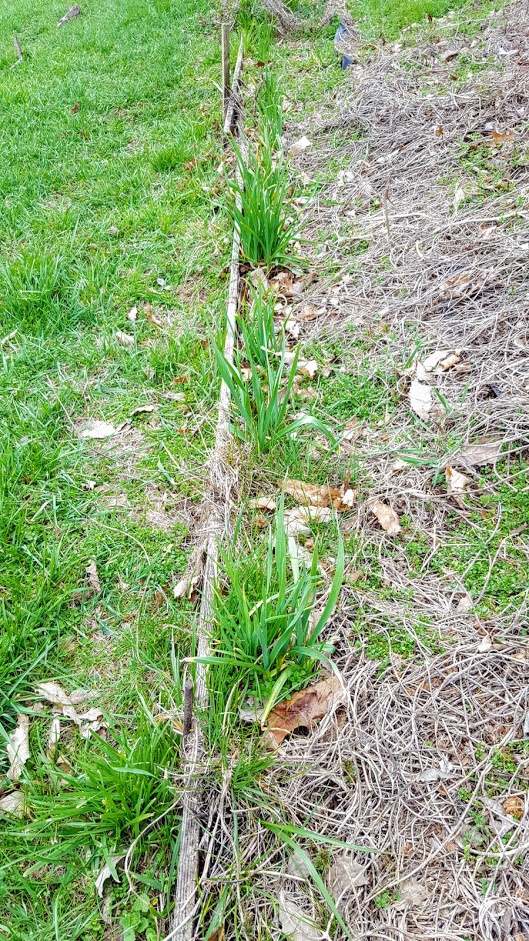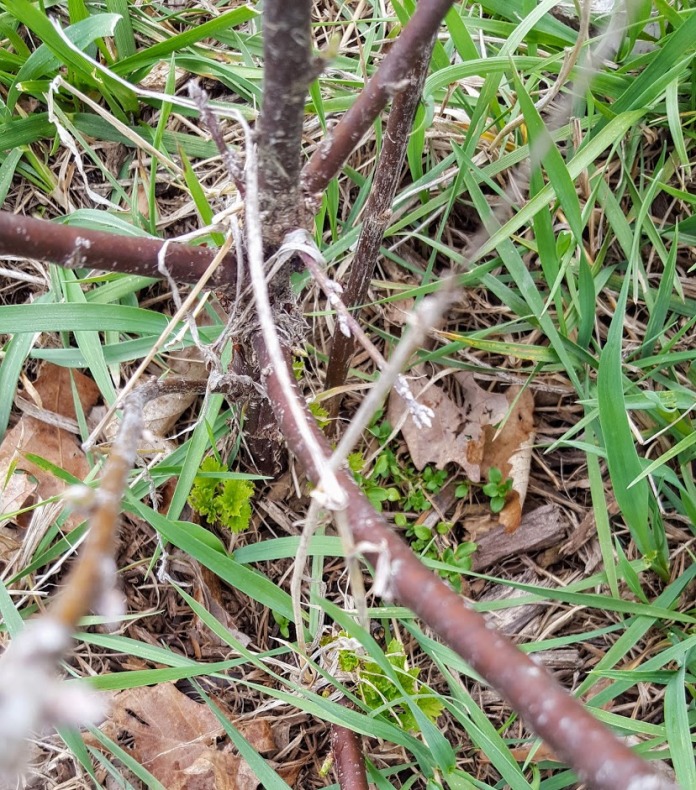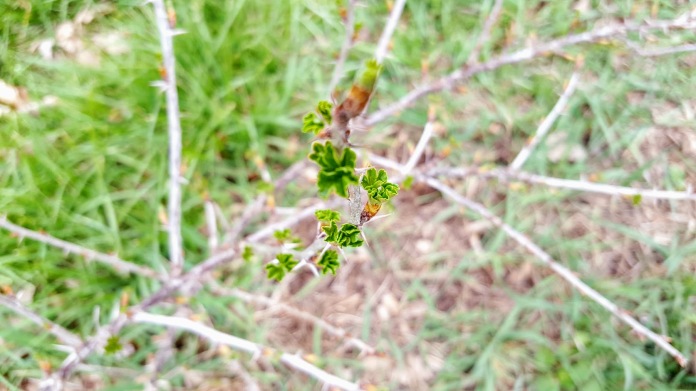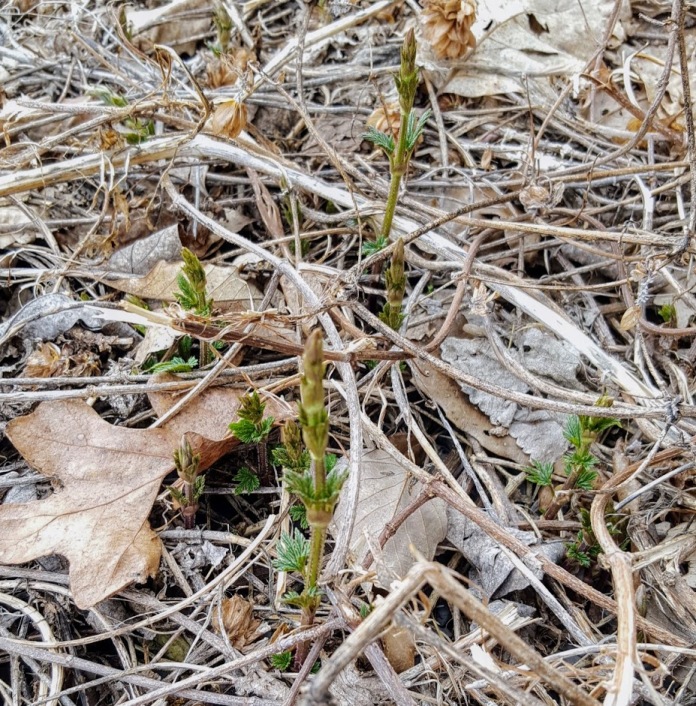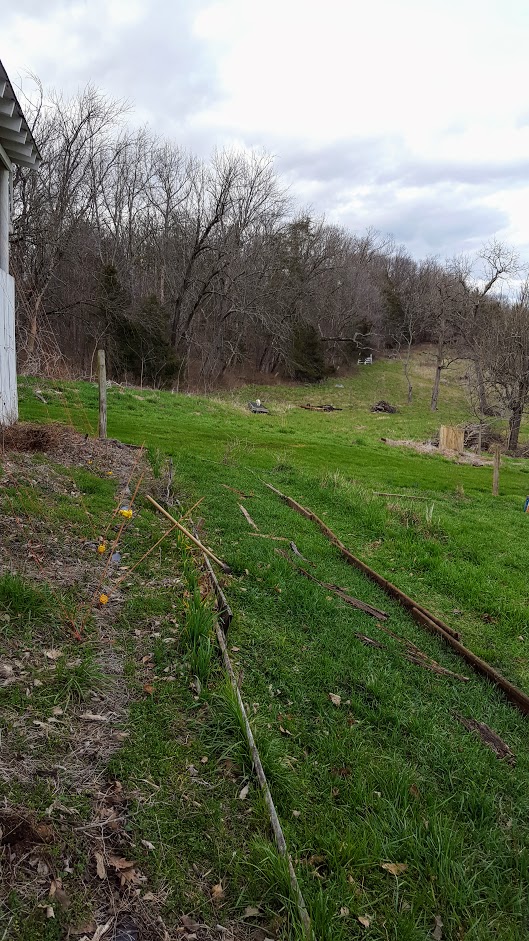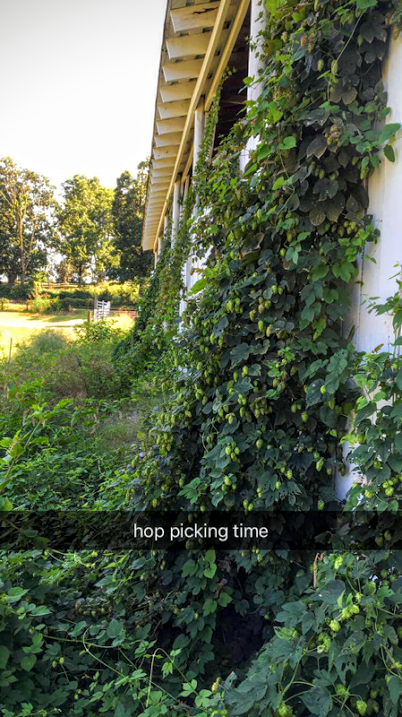A campaign was finally launched to regain the ground lost in the garden due to 2 years of neglect. With all of the rain this spring, the garden was overrun by chest-high grasses, weeds and even a few trees consisting of locust, walnut, ailanthus and an elm of some sort. It was in such bad shape that the terraced garden beds could not be located!
Three hours with the weedwacker is what it took to be able to find the original garden beds. Then another 2 hours was spent pulling weeds by hand.
The invasion of one interesting weed seems to have been beneficial. It had a fleshy stem from which many spatulate leaves originated. It formed dense thickets that collapsed into dense mats. Shallow roots allowed single-handed removal of entire mats. The uprooted mass could be rolled into a self-containing bail resembling hay. Some sort of barb scratched the daylights out of skin and caused a mild reaction to the irritation that lasted a few hours. Water content of this plant seemed to be incredibly high as it felt very lush and fleshy, easily bruised but very heavy. They should compost beautifully!
On that note, the massive amount of uprooted plant matter was piled at the end of the garden beds. Or more accurately, the bricks/bails of the aforementioned weed were used in a weird sort of biological masonry. The two purposes of this exercise were providing a marker to locate the garden beds during the next battle as well as to burn out the invading weeds as decomposition produces heat and nitrogen.
Over 3 yards of mulch was used in the garden, to reclaim the boundary mulch bed that contains the grapes and brambles, and to supplement the vacant tree beds created 2 years ago. More grapes and Rubus brambles were added. Five pounds of buckwheat was spread in the garden beds as a biological weapon against re-encroachment of the weeds that were just cut or removed.
Many of those tree beds are no longer vacant!
Those new trees plus a surprising find after completing the cleanup efforts will be in the next posts.
